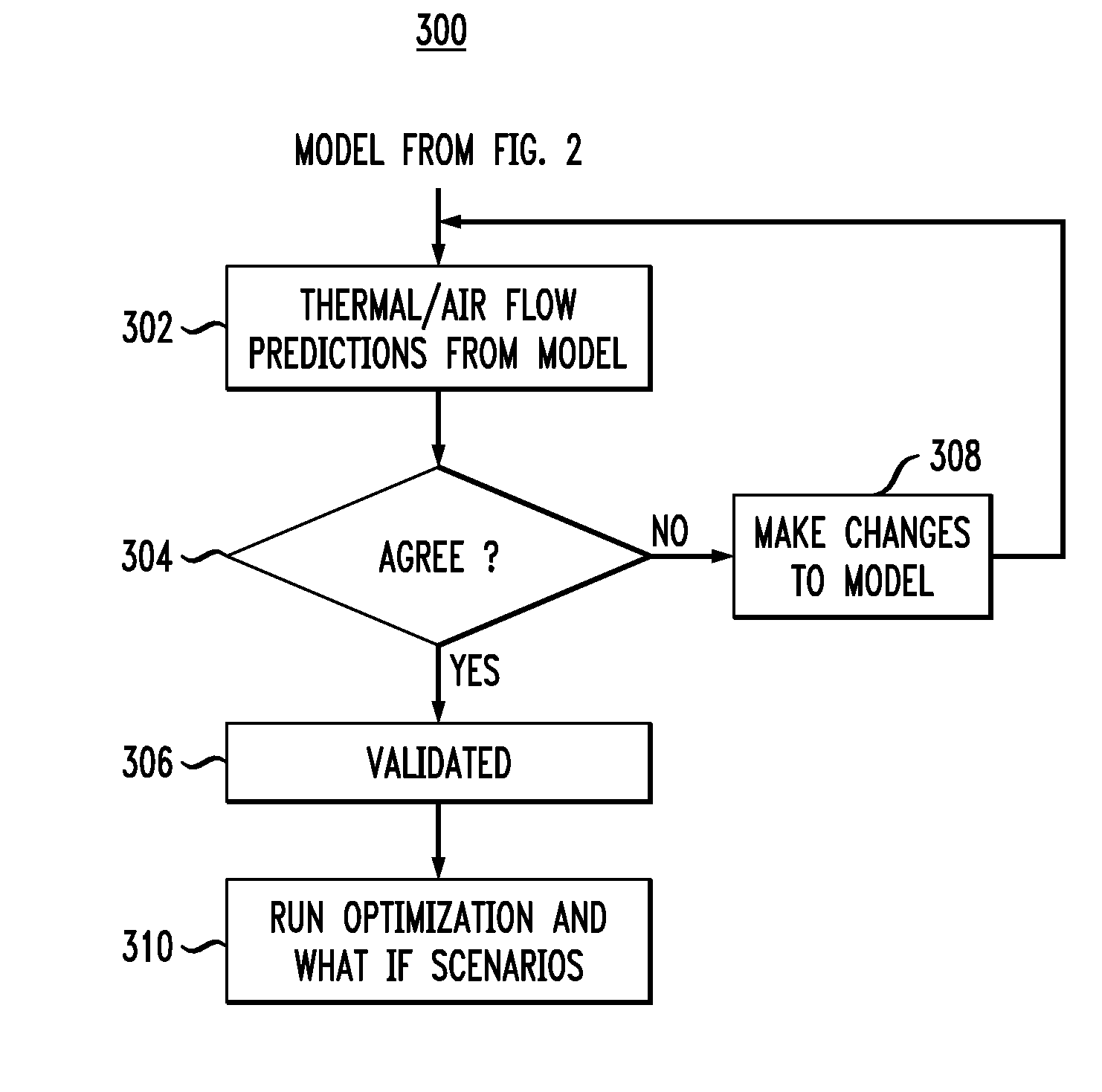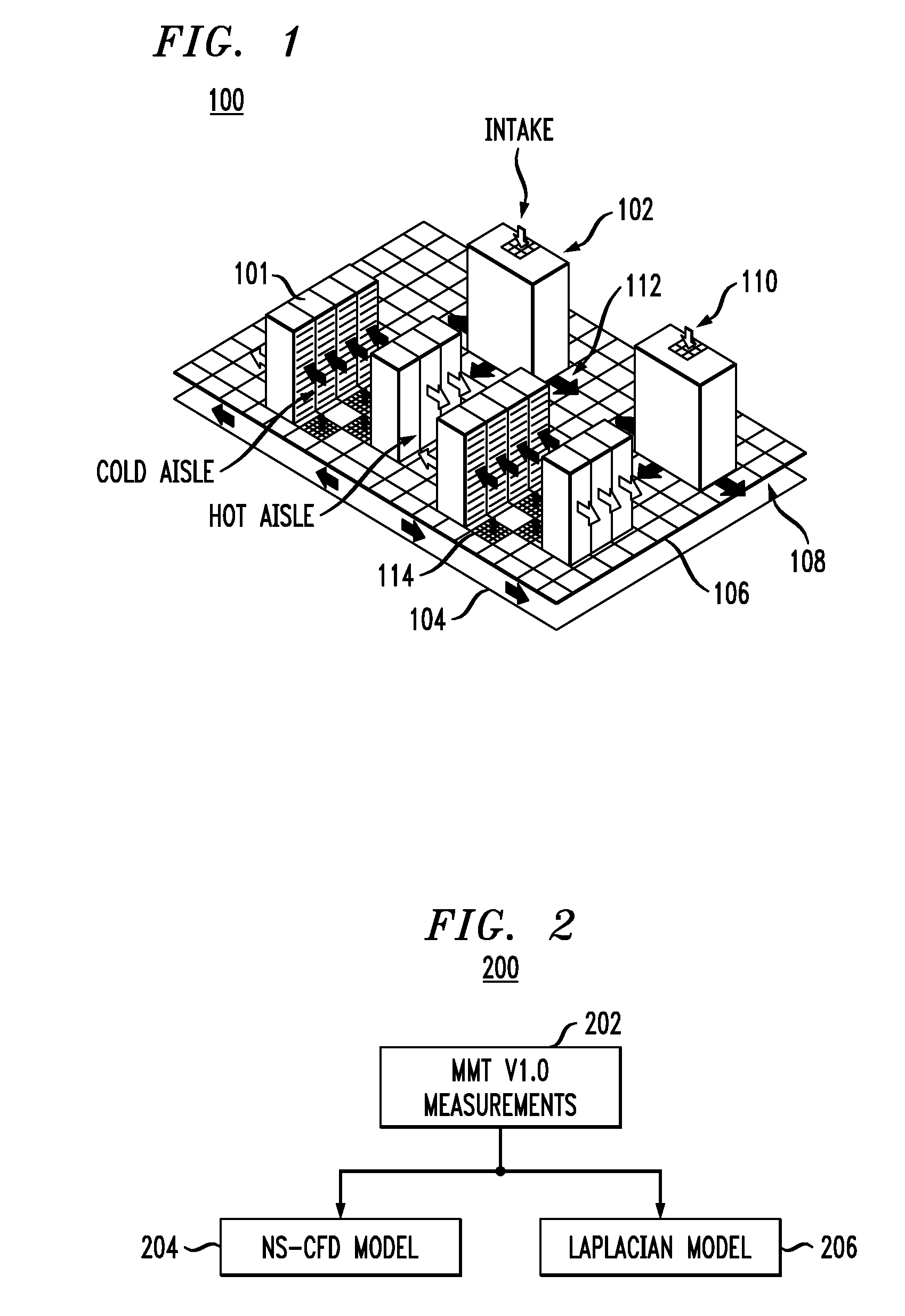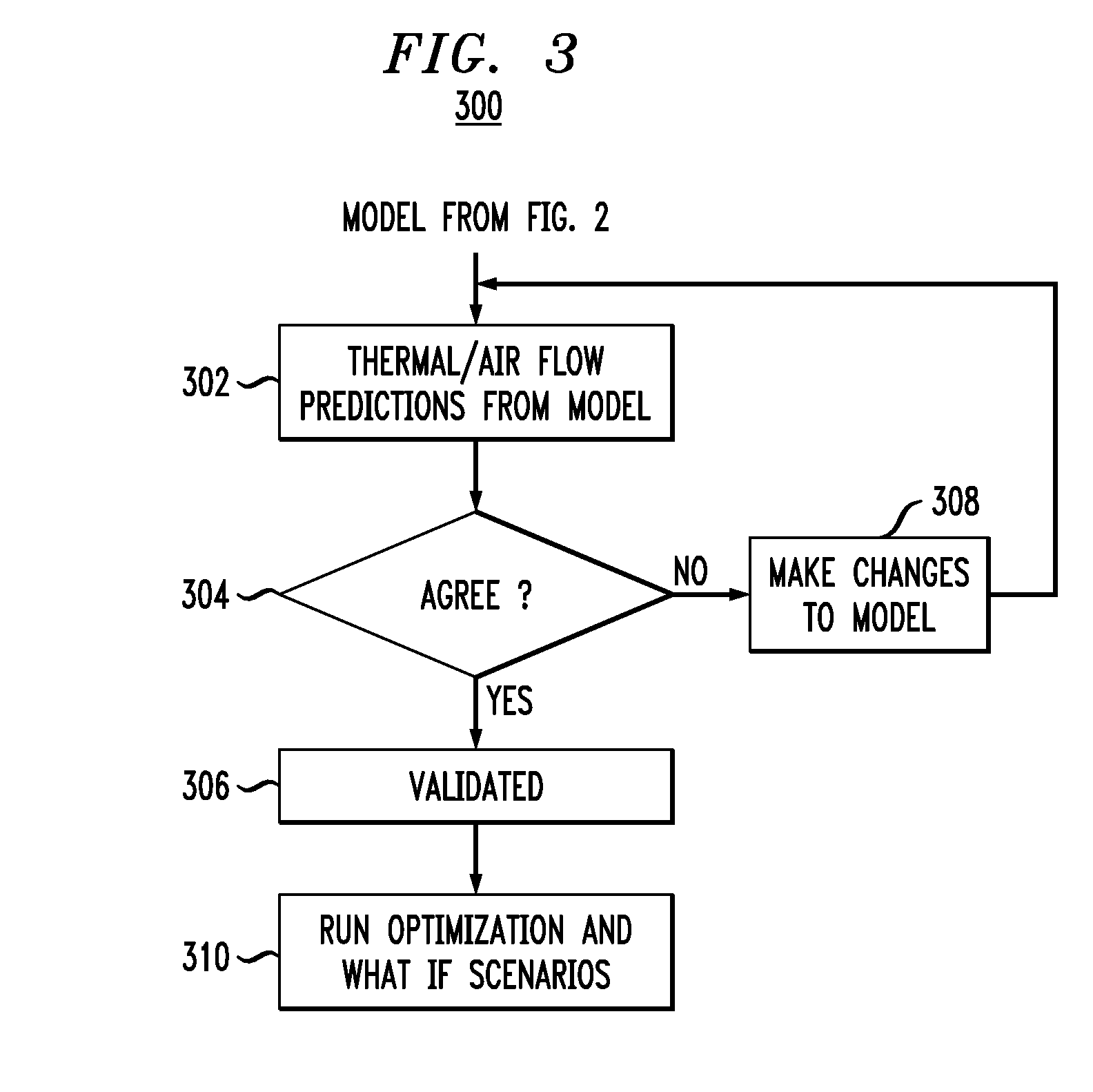Techniques for Thermal Modeling of Data Centers to Improve Energy Efficiency
a data center and thermal modeling technology, applied in the field of data centers, can solve the problems of difficult cooling of data center or telecommunications room densely packed systems, ineffective cooling of equipment, and the application of ns-cfd modeling to data center can be somewhat problemati
- Summary
- Abstract
- Description
- Claims
- Application Information
AI Technical Summary
Problems solved by technology
Method used
Image
Examples
Embodiment Construction
[0023]FIG. 1 is a diagram illustrating exemplary data center 100. Data center 100 has information technology (IT) racks 101 and a raised-floor cooling system with air conditioning units (ACUs) 102 (also referred to herein as computer room air conditioners (CRACs), see below) that take hot air in (typically from above through one or more air returns in the CRACs) and exhaust cooled air into a sub-floor plenum below. Hot air flow through data center 100 is indicated by light arrows 110 and cooled air flow through data center 100 is indicated by dark arrows 112.
[0024]In FIG. 1, IT racks 101 use front-to-back cooling and are located on raised-floor 106 with sub-floor 104 beneath. Namely, according to this scheme, cooled air is drawn in through a front (inlet) of each rack and warm air is exhausted out from a rear (outlet) of each rack. The cooled air drawn into the front of the rack is supplied to air inlets of each IT equipment component (servers for example) therein. Space between rai...
PUM
 Login to View More
Login to View More Abstract
Description
Claims
Application Information
 Login to View More
Login to View More - R&D
- Intellectual Property
- Life Sciences
- Materials
- Tech Scout
- Unparalleled Data Quality
- Higher Quality Content
- 60% Fewer Hallucinations
Browse by: Latest US Patents, China's latest patents, Technical Efficacy Thesaurus, Application Domain, Technology Topic, Popular Technical Reports.
© 2025 PatSnap. All rights reserved.Legal|Privacy policy|Modern Slavery Act Transparency Statement|Sitemap|About US| Contact US: help@patsnap.com



